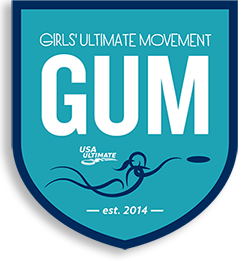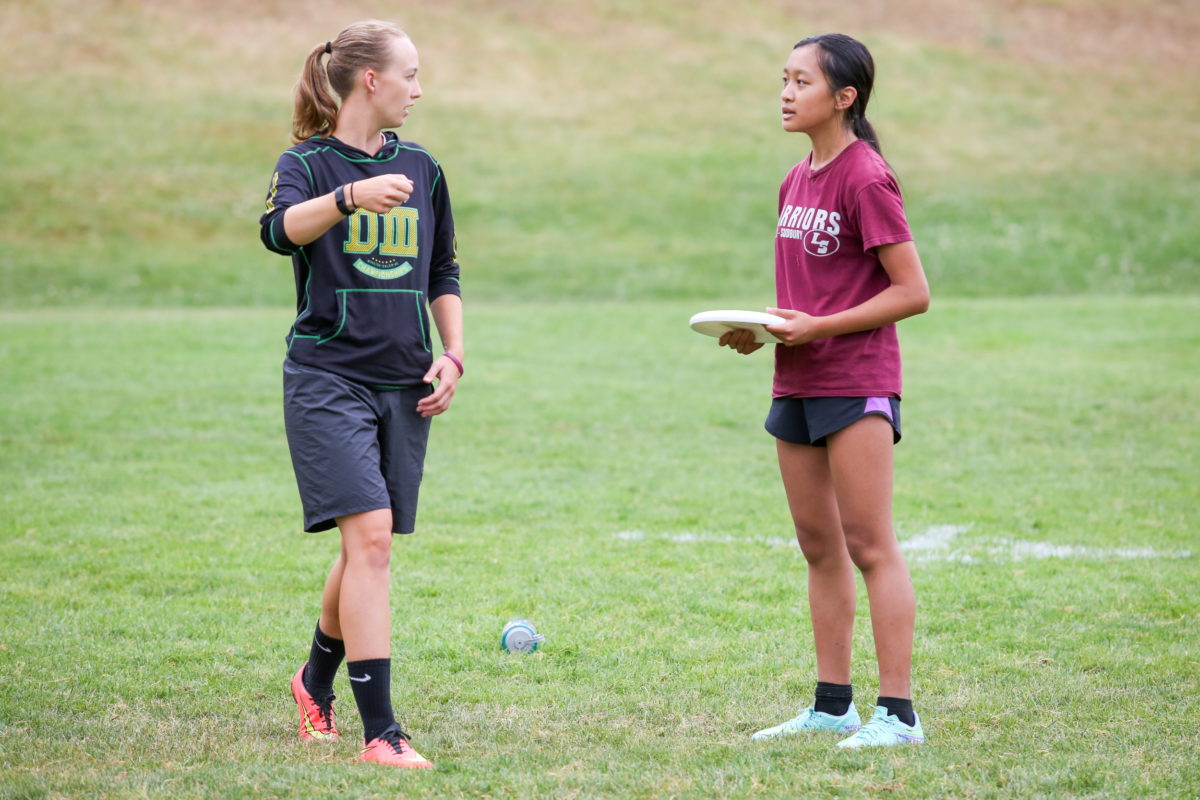During the summer of 2015, I learned that girls made up only 30 percent of USA Ultimate’s youth members. This statistic burst my pleasant Amherst bubble, where our school of 1,000 students had enough girls for three ultimate teams.
I reflected on my exposure to strong female athletes as an elementary and middle school girl. Growing up, I was lucky to have a number of role models that celebrated female participation in sports, so much so that I didn’t question my athletic abilities and felt empowered to pick up new sports on a whim. During middle school, I ran cross country, played soccer, basketball and lacrosse, three of which were sports I had never done before. As a kid, my mom exemplified what it meant to be an athlete and how to celebrate athletes. She coached my lacrosse team, played tennis and took me to watch women’s college basketball games.
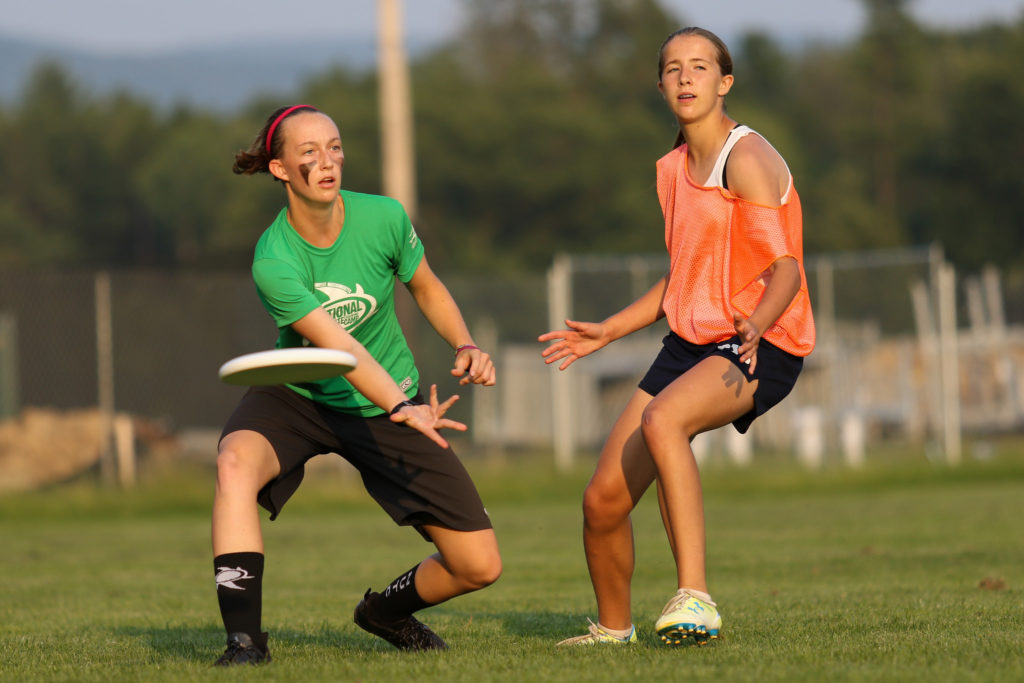
In 2016, I saw an opportunity to be that role model for younger girls. My teammate and I started a student organization called Empowering Girls Through Sports. We worked to connect local youth with female role models, provide opportunities for girls to be active and create environments for girls and boys to play together productively. Twice a month, we ran an evening program at a local elementary school. Our program was part of the free, out-of-school programming the community school organized. Students were free to choose any activity they wanted and switch between activities when they weren’t engaged.
My organization had this perfect vision of us running two hours of ultimate and facilitating positive play between all students during our evening activity time. It quickly became apparent that this wasn’t going to be easy. For our first session, we found ourselves with only eight girls, and they all quickly disappeared, leaving the gym full of 20 boys. We decided we needed to actively recruit more girls and create an environment where they felt empowered to play sports.
The next week, we opened the gym for only girls for the first hour. We ventured from the gym into the school hallways, introduced ourselves to girls, asked them about their favorite games and invited them to join us in the gym. We played a lot of sharks and minnows and never-ending tag. We created obstacle courses and ran an agility ladder. We decided to play whatever games the girls were enthusiastic about while introducing some of our favorite ultimate games. By our fourth week, they loved Champion of the Hill (a partner Frisbee throwing competition). Each week, some of the same girls returned and more girls joined us. The program director told us that, during our nights in the program, she saw more sweaty girls with flushed faces than ever before.
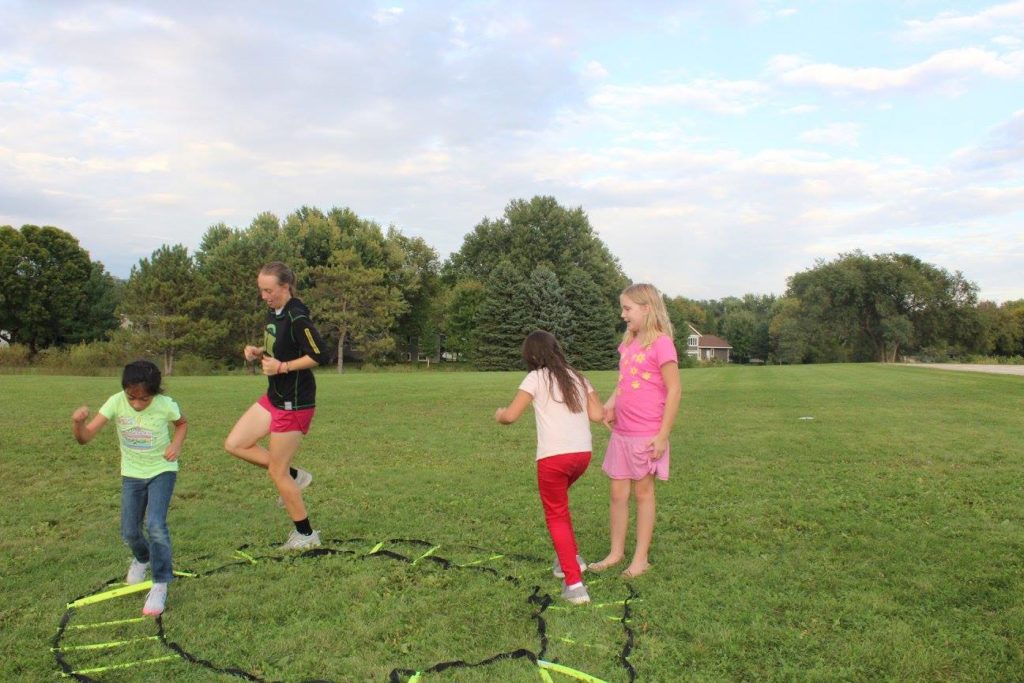
The second hour was still challenging. We still lost girls as soon as the boys entered, but more girls were staying. Our experience as facilitators provided us with an opportunity to have important conversations with the boys. One boy asked my teammate, “When will there be boys only gym time? It’s not fair.” To this, she responded, “Isn’t all other gym time boys only gym time?” and explained that, during “open” gym time, she had seen boys taking discs and balls from girls, taunting them and cheating in games.
One evening, a group of girls approached us during a game of tag and explained that some boys were refusing to sit down when the girls tagged them. We stepped in and reiterated that, in the gym, we expected everyone to follow the rules, treat others with respect – both with their bodies and words – and support and cheer for friends and classmates alike. We also made sure the girls felt supported and self-confident enough to confront the boys, and we talked through with them about what they could say.
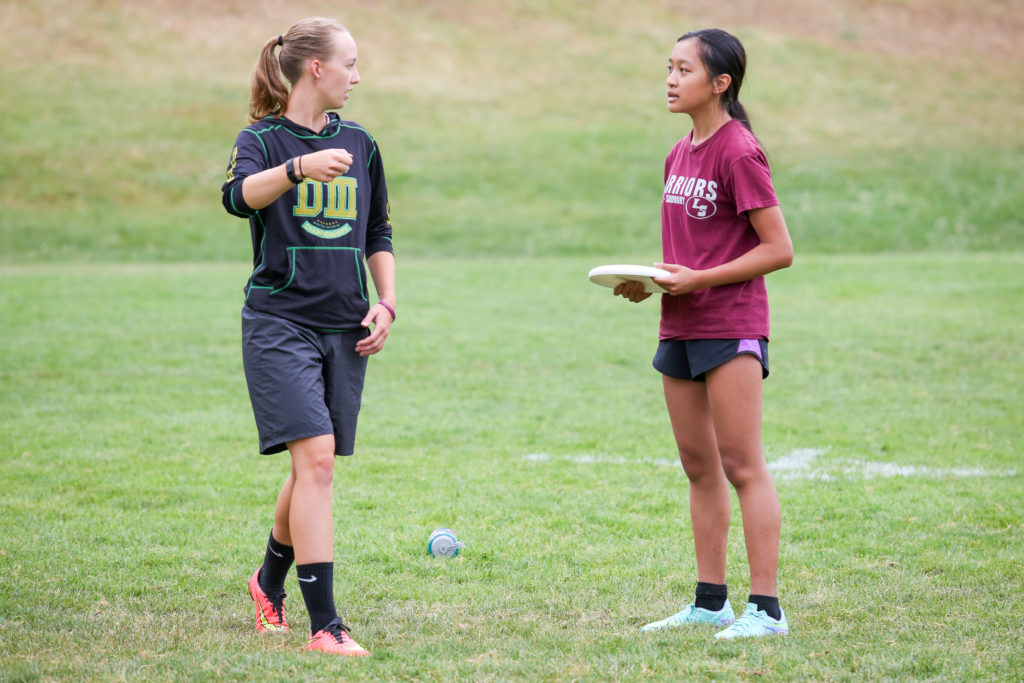
Sometimes our time in the gym felt like we’re just supervising kids. But, I’m reminded that our program was not just about us controlling and dictating a welcoming gym environment for girls twice a month. We got to play with these kids, learn their newly invented games and spend hours running away from the young girls who always wanted to catch the “big girls.” We aimed to empower girls to stand up in all spaces, and we worked to teach boys what it meant to treat their peers with respect. When we arrived the next fall for our first evening, we received a welcome surprise when two girls spotted us and our discs and came running, “Yay! Frisbee! You’re back! I was wondering if you’d be coming.”
Our investment in these less-structured evenings paved the way for a specific girls’ ultimate program. The following spring, we gained enough interest to hold a series of weekly sessions to teach ultimate to girls. We worked with a small group of girls to teach them the basics of throwing, catching and playing, all while building their confidence as athletes. During the first week, one girl spoke so quietly we could barely catch her name. As we coached her to throw, she saw her skills develop and her confidence grow. By the end of our program, she was calling for the disc, begging for her favorite drill and smiling non-stop.
